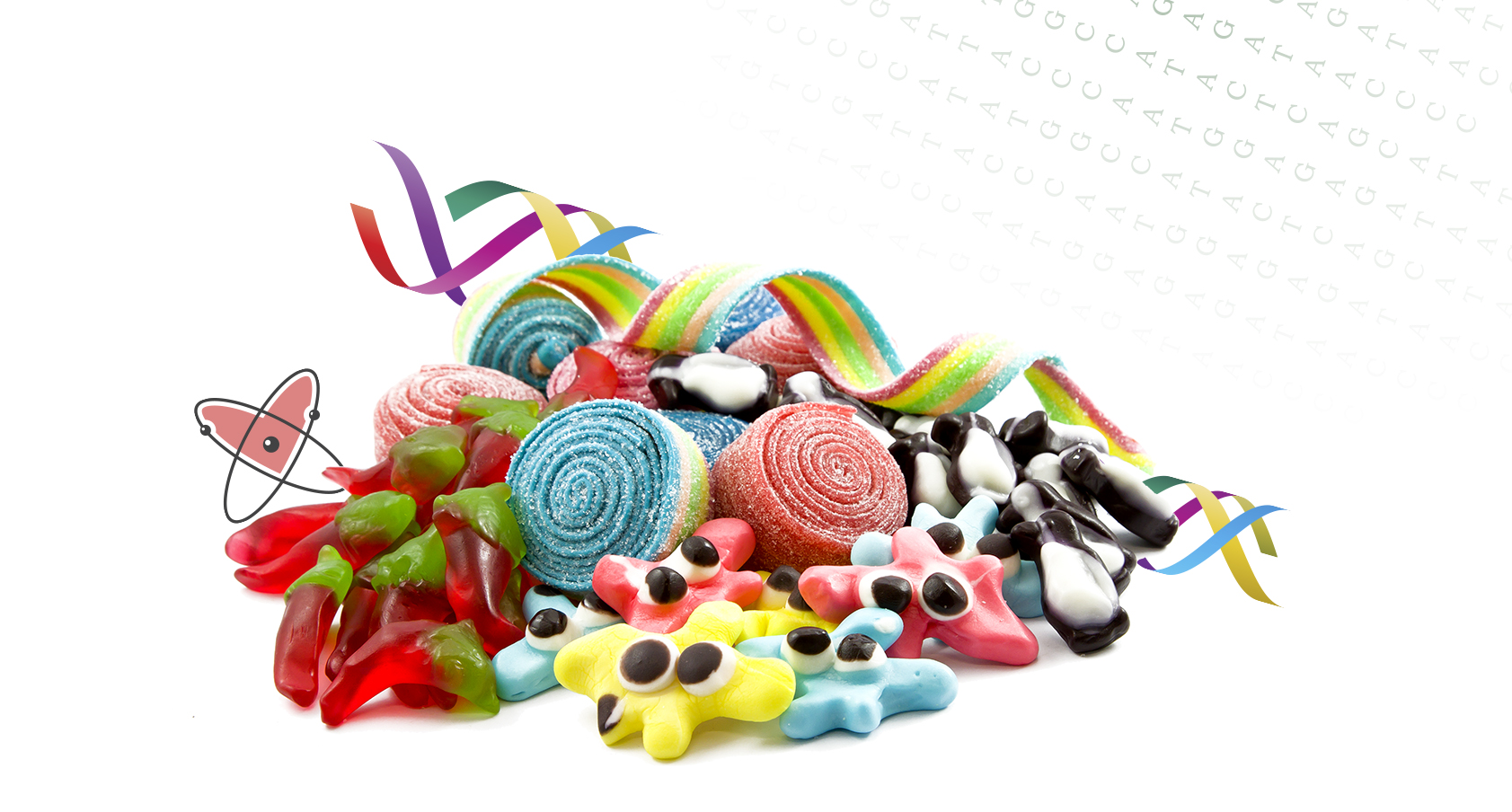 Few people can resist the allure of delicious, brightly colored, uniquely shaped gummy candy. It’s a versatile year-round treat that can be shaped and colored into virtually anything you can dream up. Whether your customers prefer a soft chew, a longer-lasting chew or even an ‘elastic’ experience (as in Haribo Gold-Bears), the science behind the satisfying treat is basically the same – low-boiled sweets with a gelling agent (hydrocolloid).
Few people can resist the allure of delicious, brightly colored, uniquely shaped gummy candy. It’s a versatile year-round treat that can be shaped and colored into virtually anything you can dream up. Whether your customers prefer a soft chew, a longer-lasting chew or even an ‘elastic’ experience (as in Haribo Gold-Bears), the science behind the satisfying treat is basically the same – low-boiled sweets with a gelling agent (hydrocolloid).
Read on to discover more sweet science about each type of gummy and reasons to carry these top sellers. We’ve even rated them on their “meltability” factor (yes, we made up that phrase, but the science is real). A “Five Gummy Bear” rating = melts easily. A “Zero Gummy Bear” rating = really stands up to heat.
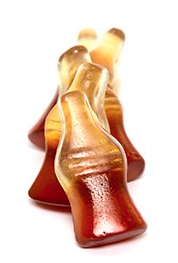 GELATIN
GELATIN
This is the “true” gummy candy we all know and love.
THE SCIENCE: Gelatin is a long protein that forms a triple cylindrical helix.
WHY THEY GET STICKY: When dissolved in water and heated, the protein strands form junction zones with nearby gelatin proteins.
WHY THEY’RE NOT ALWAYS STICKY: The junction zones slow down water molecule movement to form a stiff gel upon cooling.
WHY THEY’RE REALLY COOL: This gel is thermoreversible – the gel will melt if the temperature increases and will also re-gel upon cooling. We have to admit, that’s pretty fascinating.
WHY CUSTOMERS LOVE THEM: The firm texture, and long lasting chew make gelatin gummies a favorite with adults and kids alike. And, did we mention the fun elasticity? We’ve all stretched and squished a few gummy bears, haven’t we?
MELTABILITY FACTOR: 4 out of 5 Gummy Bears – don’t leave them in your glove compartment on a warm day. . . unless you prefer a sticky lump of gummies.
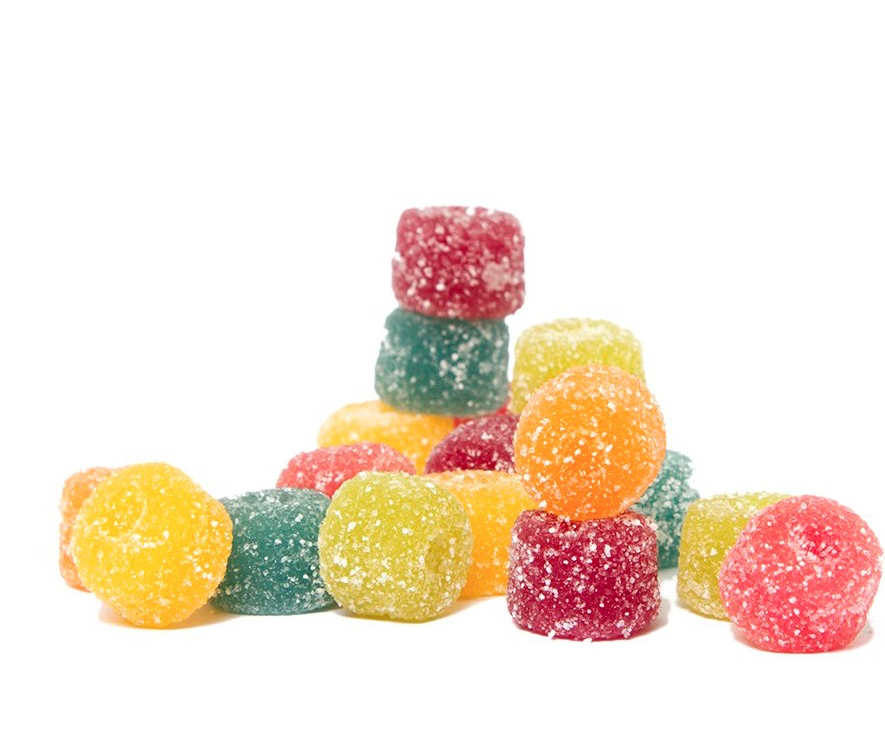 STARCH
STARCH
While it sounds less than appealing, starch candies are among some of the best sellers in the “gummy” category – namely Swedish Fish and Gumdrops.
HOW TO TELL IF IT’S A STARCH GUMMY: The easy-to-chew texture of starch gummies is most notable because it has “stick to your teeth” properties.
THE SCIENCE: It’s kind of detailed, but here are some of the basics:
Starch is found in fruits, vegetables and grains.
When exposed to hot water, starch molecules swell immensely and thicken the mixture. For a fascinating microscopic view of swelling starch molecules, check out this YouTube video.
The magic of the candy happens during cooling. The puffed up individual strands of carbohydrates contract and tangle with other nearby carbohydrate strands trapping water and causing a gel to form (the magic).
Okay, so that doesn’t sound magical but the resulting sweet treats certainly have a mystical ability to entice customers to come back for more.
MELTABILITY FACTOR: 3.5 out of 5 Gummy Bears – we don’t recommend storing them in a gym locker. It’s way too warm and humid for that. Starch gummies prefer a cooler climate.
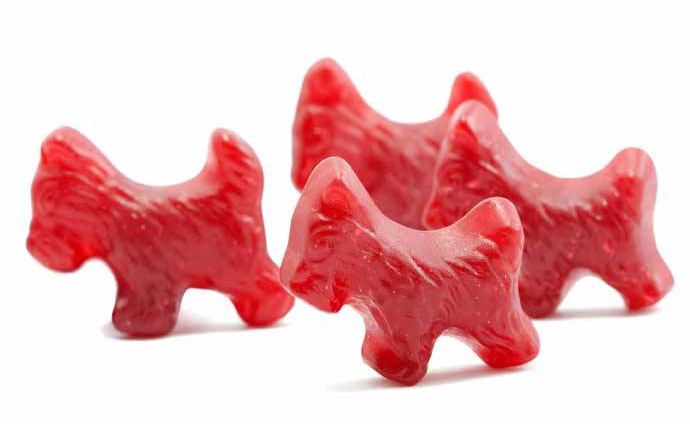 WHEAT FLOUR
WHEAT FLOUR
WHY IT’S UNIQUE: Flour is quite uncommon in candy production except for one particular (overwhelmingly popular) item—licorice!
THE SCIENCE: Flour is chock-full of starch and one other ingredient— Gluten. Gluten gets a bad rap these days, but it really does play a pivotal role in a wide range of tasty foods.
WHY IT’S SO SPECIAL: While providing all of the benefits of starch gelling, flour also imparts the strong protein structure of gluten that allows the licorice to be pulled and rolled without breaking the gel, so we get laces and twists and various other licorice treats.
LICORICE OR NOT? What’s in a name? Not all “licorice” candy is made from licorice root – but that’s a topic for another blog. So, whether it’s red, black or any other color of the rainbow, starch candies (known as “licorice” to your loyal customers) are a perennial favorite. Some prefer Red Vines. For others, only Twizzlers will do. And, then there are the purists who only buy Finnish Licorice, so be sure to stock a wide variety to please every palate.
MELTABILITY FACTOR: 3 out of 5 Gummy Bears – wheat “gummies” will go stale much more easily than they’ll melt. Store them in a cool, dry place. Oh, who are we kidding? Your customers will devour these so quickly, they won’t even ask about storage options.
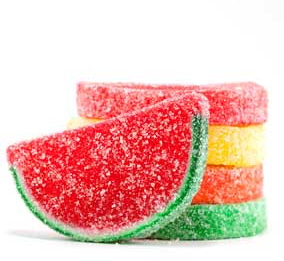 AGAR
AGAR
Fruit Slices are our most popular Agar “gummies” and some customers claim our Nassau Candy Fruit Slices are “the best they’ve ever tasted.”
WHAT IS IT? Agar is derived from seaweed or algae.
THE SCIENCE: It is similar to gelatin, but Agar has a unique ability called hysteresis.
WHY THEY’RE SOFT BUT NOT STRETCHY: Hysteresis gives Agar a much higher melting temperature than its gelling temperature. Agar candies have a short texture and a very soft bite.
WHY THEY ARE SO POPULAR: In addition to being a huge spring seasonal seller (they’re a traditional Passover treat) Agar candies are suitable for vegetarians and vegans.
WHAT KEEPS CUSTOMERS COMING BACK FOR MORE: These “gummies” come in an array of remarkably luscious fruit flavors with the added bite and sweet allure of sugar granules.
MELTABILITY FACTOR: 2.5 out of 5 Gummy Bears – Agar “gummies” are a great summertime treat, but we don’t recommend leaving them on a poolside chair in direct sunlight on a hot July afternoon.
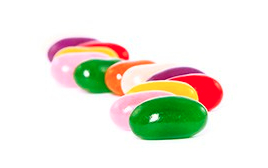 PECTIN
PECTIN
Brightly colored, soft and supple Fruit Gems are made with pectin and so are those pretty perennial favorites; jelly beans!
WHY CONFECTIONERS LIKE IT: Pectin may be the preferred gelling agent of a candy maker because it has the best flavor release (which makes it ideal for sweetened fruit-flavored items).
THE SCIENCE: Pectin is a plant fiber made up of carbohydrates linked together with little “tails” sticking out. The little tails are attracted to each other in an acidic environment with sugar, forming hydrogen bonds between the strands. In other words, it gels.
THE TASTE AND TEXTURE: Pectin “gummies” have a short texture that is brittle, yet tender so you get a clean bite without a lot of elasticity and it releases flavor well, so it’s ideal for fruit-flavored candies.
WHY THEY SELL SO QUICKLY: With all the possible flavors imaginable, (even “gross” ones) pectin candies like jelly beans offer customers a lot of bang for their buck. They can mix and match an assortment to suit their own tastes with bulk offerings. Plus, pectin candy is vegetarian-friendly.
MELTABILITY FACTOR: 2 out of 5 Gummy Bears – Pectin “gummies” are pretty tolerant of heat, so a baggie of jelly beans can withstand being stuffed into a pocket and enjoyed as an afternoon snack.
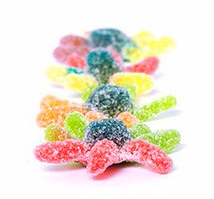 COMBINATION
COMBINATION
SPECIAL RECIPE: Why commit to just one gummy ingredient? Confectioners are notably curious and experimental. So, it stands to reason that candy makers have figured out ways to mix and blend and invent combination candies that incorporate the properties of different gummy ingredients to create something wild and wacky. Many gummy products use a mixture of gelling agents to create different textures – like gummy sharks and frogs.
THE SCIENCE: Adding agar to a gelatin gummy makes the texture softer. Haribo Gummy Raspberries combine agar and gelatin to make a soft and elastic treat that also features the sweet crunch of nonpareils for a truly unique experience.
MORE SCIENCE: What do you get when you combine pectin with a starch jelly candy? You get a more dense gummy that is also less sticky. Show your customers how sweet science can be with this yummy pectin/starch combo – E. Frutti Sea Creatures.
PREDICTION FOR THE FUTURE: Because our mad sugar scientists are always cooking up something new, we can almost guarantee innovative, wondrous, and marvelous sweet gummy treats are on the horizon at Nassau Candy!

Hi! Let us know what's on your mind.